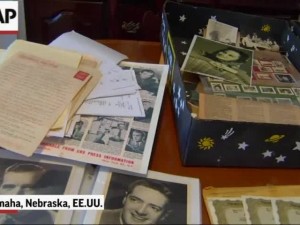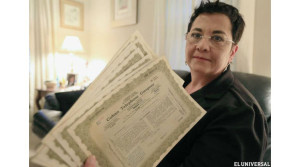EXAMPLE OF EASTERN EUROPEAN COMMUNIST COUNTRIES GIVES HOPE TO RETURN OF CUBA’S CONFISCATIONS.
.. In the late fifties Cuba was a country gripped by corruption, but enjoyed a relative well-being. Especially its president, Fulgencio Batista. According to the book of Guillermo Jimenez, “Owners of Cuba 1958”, Batista owned at least three sugar mills, two refineries, two distilleries, a bank, three airlines, two motels … “To mask their interests in such incredible number of companies, which amounted to about 70, had a dense web of nominees, intermediaries, accomplices, partners and lawyers, “said Jimenez. Nevertheless, at that time Cuba was exporting more than Mexico. In a way, it was a country more advanced than Spain. But with the advent of Castro, they closed factories, farms, shops, businesses were occupied. Until in March 1968 it was announced that “eliminate all manifestations of private trade”.
Arturo Gonzalez, who now lives in Manresa and was born on the island when the revolt broke out, is one of those affected. “The paradox is that Castro’s revolution was financed by businessmen of the time, they wanted to get rid of the corrupt Batista regime. Few could imagine what would happen, “he says. Gradually, his father was losing everything. First came the soldiers who opened the cash register. Then it was deposeído his farm with 1,000 head of cattle, their property in Havana, from its stores. After four years, his father was forced to return to Spain with nothing. He managed to take the title by diplomatic pouch. Arturo now expects these papers enabling them to assert their rights.
Argentine Luis Aguilé sang, another affected by the revolution, “When I left Cuba, I left my life, I left my love.” And, presumably, a few more things. The Spaniards left actions, policies, art, cars, real estate. The return of the latter is complicated because many houses are in ruins. The luck is that they have not disappeared property records.
It is estimated that approximately 3,000 Spanish families left property valued today as a whole about 10,000 million euros. “During a trip to Cuba was taking pictures of my old building in the capital,” says Arturo Gonzalez. I explained to a group of onlookers who waited back. And you know what they told me some of them? I hope it will be soon! “.
Studies of similar cases occurred in Eastern Europe after the fall of communism show that in 90% of cases some compensation is achieved. Cabarrocas the idea is to group the different demands, which have a value of 2,000 million, and collect 30% of what is achieved. So far, more than 80 partners are funding your company. They have already invested 6 million euros in the negotiations and in the documentary collection. Confident that the return worthwhile. “The recent opening of the regime undoubtedly represents an acceleration. Several investment funds have shown interest in our business, “reveals Cabarrocas. “There is enormous pressure so that there is a lot of investment when the scheme ends. And for that legal certainty is needed, “he says. And patience. Suavecito.
Between realism and skepticism.
La Vanguardia, Spain. Economia.
In 1986, Spain signed an agreement with Cuba to compensate the Spanish citizens of their losses. Indeed, Castro’s revolution meant, in practical terms, confiscate private property in violation of international law. It was established that Cuba would pay about 33 million euros, part in cash, other species. The settlement was for between 10% and 20% of the total value of compensation. According to a report of Professor of Private International Law at the UB, Ramón Viñas Farré, the amount was a mere palliative. Only 40% agreed to pay and a subsequent decision of the Supreme Court certified that this claim would not prevent later, compensation in the right amount. However, it may take over a decade to get it. “Governments successors can rarely escape debts incurred by states or governments they replaced. History has made it clear that repressive regimes, such as Cuba who now heads eventually are in favor of economic liberalization if it favors the economic stability of the regime, “says a report from Creighton University (USA ) on claims of ownership between Cuba and Spain.
..The American billionaire Stephen Ross, after returning from a trip to Cuba this month, said he had not seen in the country the least serious business opportunity and simply “the island is not ready”.
La Vanguardia, Spain / Piergiorgio M. Sandri / Excerpts/ InternetPhotos / TheCubanHistory.com
The Cuban History, Hollywood.
Arnoldo Varona, Editor.
EJEMPLO DE EUROPA COMUNISTA DA ESPERANZA A LA DEVOLUCIÓN DE CONFISCACIONES EN CUBA.
…A finales de los años cincuenta Cuba era un país atenazado por la corrupción, pero que gozaba de un relativo bienestar. Sobre todo el de su presidente, Fulgencio Batista. Según el libro de Guillermo Jiménez, “Los propietarios de Cuba 1958”, Batista era propietario de al menos tres fábricas de azúcar, dos refinerías, dos destilerías, un banco, tres aerolíneas, dos moteles… “Para enmascarar sus intereses en tal increíble numero de empresas, que se elevaban a unas 70, disponía de una tupida telaraña de testaferros, intermediarios, cómplices, socios y abogados”, afirma Jiménez. Pese a ello, en aquella época Cuba exportaba más que México. De cierta manera, era un país más adelantado que España. Pero con la llegada de Castro, se cerraron fábricas, se ocuparon fincas, tiendas, empresas. Hasta que en marzo de 1968 se anunció que se “eliminaría toda manifestación de comercio privado”.
Arturo González, que ahora vive en Manresa y que nació en la isla cuando estalló la revuelta, es uno de los afectados. “La paradoja es que revolución castrista fue financiada por los empresarios de la época, que querían deshacerse del régimen corrupto de Batista. Pocos podían imaginar lo que iba a pasar”, cuenta. Poco a poco, su padre fue perdiendo todo. Primero llegaron los soldados que abrieron las cajas registradoras. Luego fue deposeído de su finca con 1.000 cabezas de ganado, de sus inmuebles en La Habana, de sus almacenes. Después de cuatro años su padre se vio obligado a volver a España sin nada. Consiguió llevarse los títulos de propiedad por valija diplomática. Arturo espera que ahora estos papeles les sirvan para valer sus derechos.
Cantaba el argentino Luis Aguilé, otro afectado por la revolución, “Cuando salí de Cuba, dejé mi vida, dejé mi amor”. Y, es de suponer, unas cuantas cosas más. Los españoles dejaron acciones, pólizas, obras de arte, automóviles, inmuebles. La devolución de estos últimos es complicada, porque muchas de las viviendas están en ruinas. La suerte es que no han desaparecido los registros de la propiedad.
Se estima que 3.000 familias españolas abandonaron unos bienes valorados hoy en su conjunto unos 10.000 millones de euros. “Durante un viaje a Cuba estuve sacando foto de mi antiguo edificio en la capital”, relata Arturo González. Expliqué a un grupo de curiosos que esperaba recuperarlo. ¿Y saben que me contestaron algunos ellos? ¡Ojalá sea pronto!”.
Estudios de casos similares ocurridos en Europa del Este tras la caída del comunismo demuestran que, en el 90% de los casos se consigue algún tipo de compensación. La idea de Cabarrocas consiste en agrupar las distintas demandas, que tienen un valor de 2.000 millones, y cobrar el 30% de lo que se consiga. De momento, más de 80 socios están financiando su empresa. Ya han invertido 6 millones de euros en las gestiones y en la recopilación documental. Confía que el retorno merezca la pena. “La reciente apertura del régimen representa sin lugar a dudas una aceleración. Varios fondos de inversión se han interesado por nuestro negocio”, revela Cabarrocas. “Hay una presión enorme para que haya mucha inversión cuando termine el régimen. Y para esto se precisa seguridad jurídica”, asegura. Y también paciencia. Suavecito.
Entre realismo y escepticismo.
La Vanguardia, España. Economía.
En 1986, España firmó con Cuba un acuerdo para compensar a los ciudadanos españoles de sus pérdidas. En efecto, La revolución castrista supuso, a efectos prácticos, confiscar bienes privados en clara violación del derecho internacional. Se estableció que Cuba pagaría unos 33 millones de euros, una parte en metálico, otra en especies. El finiquito correspondía entre el 10% y el 20% del valor total de las indemnizaciones. Según un dictamen del profesor de Derecho Internacional Privado de la UB, Ramón Viñas Farré, la cantidad fue un mero paliativo. Sólo el 40% aceptó el pago y un sentencia posterior del Tribunal Supremo certificó que esto no impediría reclamar, más adelante, indemnizaciones en su justa cantidad. Ahora bien, se puede tardar más de una década en conseguirlo. “Los gobiernos sucesores pocas veces pueden escapar de las deudas en que han incurrido los Estados o gobiernos a los que reemplazan. La historia ha dejado patente que los regímenes represivos, como el que actualmente dirige Cuba, con el tiempo se muestran favorables a la apertura económica si esto favorece a la estabilidad económica del régimen” sostiene un informe de la Universidad de Creighton (EE.UU.) sobre las reclamaciones de propiedad entre Cuba y España.
… El millonario estadounidense Stephen Ross, tras regresar de un viaje a Cuba este mes, declaró que no había visto en el país la menor oportunidad seria de hacer negocios y que, sencillamente, “la isla no está lista”.
La Vanguardia, Spain/Piergiorgio M. Sandri/Extractos/InternetPhotos/TheCubanHistory.com
The Cuban History, Hollywood.
Arnoldo Varona, Editor.



 EXAMPLE of Eastern European Communist Countries Gives Hope to Return of Cuba Confiscations. *** Ejemplo de Europa Comunista Da Esperanza a Devolución de Confiscaciones en Cuba.
EXAMPLE of Eastern European Communist Countries Gives Hope to Return of Cuba Confiscations. *** Ejemplo de Europa Comunista Da Esperanza a Devolución de Confiscaciones en Cuba.


